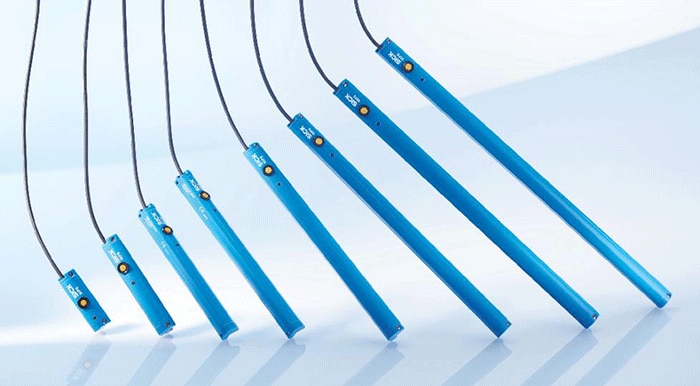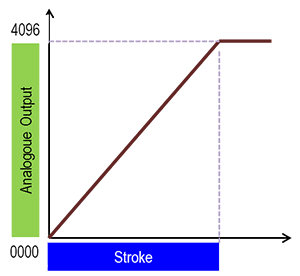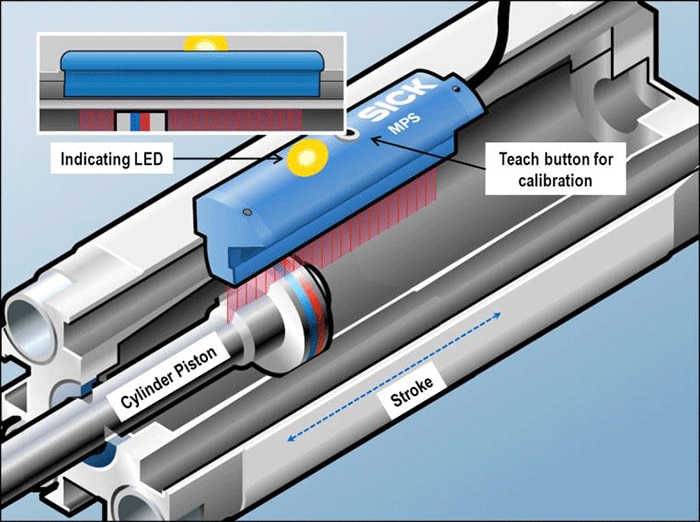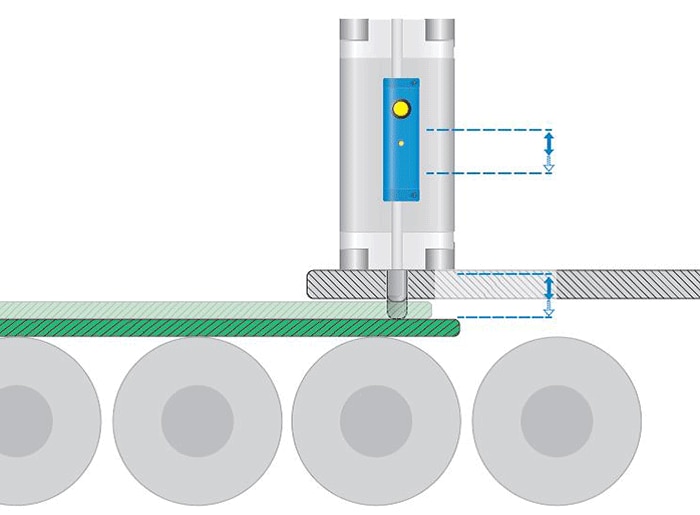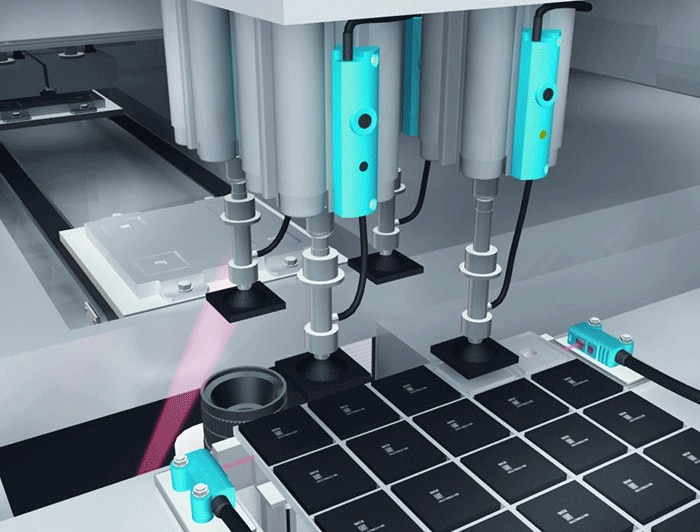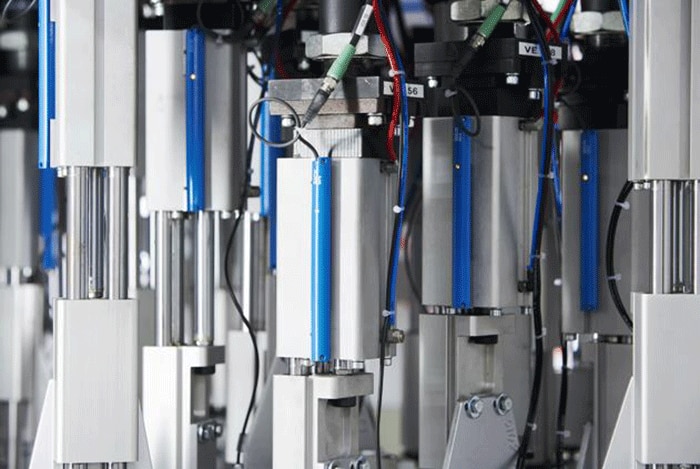Automation task using pneumatic cylinders equipped with magnetic position sensors (MPS) are gaining popularity in electronics industries, especially the manufacturing sector. Unlike cylinders using standard magnetic sensor that detects only ON-OFF status position, the magnetic position sensor (MPS) can measure linear position of the piston in cylinders. As manufacturing processes get more demanding, ON-OFF status is no longer adequate. The system needs continuous feedback of pneumatic piston position for this sophisticated tasks realisation. Some of such are like sonotrode control in ultrasonic welding machines, requires pneumatic system with MPS to operate effectively.
Traditionally, designers use various types of linear measurement sensors. These sensors are mechanical parts that follow, and measure directly the piston stroke. Firstly, industrial ingress protective IP can become an issue with this displacement sensors. Besides, such sensors are often designed for a vast number of applications, special mounting brackets are required. Most important, linear sensors are mechanical moving parts which are subjected to operating wear and tear.
Using MPS in measuring piston linear displace is gaining popularity due to the accuracy, simplicity, robustness and cost effectiveness. Robustness-wise, the MPS involves no moving parts, and therefore not subjected to mechanical wear and tear. Simplicity-wise, the MPS is designed to be mounting on most cylinders directly through the housing slots, thereby obsoleting the mounting brackets. More interesting, the MPS is optimise for cylinder linear measurement, and therefore can be cost effective. Other notable features are that the MPS are rated IP67, which means that it can be used in harsher environment within the electronic industries.
